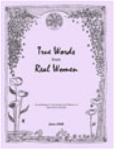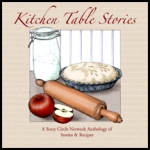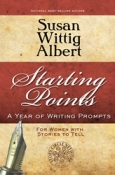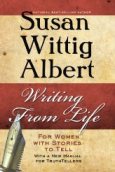In the first post in this series, I wrote about why I chose to begin doing research into the life of Rose Wilder Lane. In this post, I’ll continue the story.
When I first learned about Rose, back in the early 1970s, I had no idea that, years later, I would write a novel about her—I was simply curious about her. No, make that deeply curious, for as a child, I had read and loved all the Little House books, which I had been told were written by her mother, Laura Ingalls Wilder. Laura was an iconic figure, in my mind. There was no other writer quite like her.
Then I read Laura’s book, The First Four Years, which shocked and surprised me, since it didn’t seem possible that this not-very-well-crafted book could have been the work of the author of eight beautifully-written and award-winning books. But I discovered from the introduction that Laura had a daughter, Rose, and that—even though her writing career had long been overshadowed by her mother’s— Rose was remembered at least by some as a “famous author” who traveled abroad and wrote a “number of fascinating books.”
This intrigued me, and I began to read and collect Rose’s writings, discovering that she was an accomplished and impressive professional writer with a long string of newspaper stories, feature pieces, travel articles, books, and magazine fiction to her credit. I began to construct a bibliography of all the writings I could find, and added to it whenever I discovered a new article or book.
I also began to construct a timeline of Rose’s life, beginning with her birth on the Wilders’ claim in Dakota Territory, through the family’s move to Mansfield MO, and Rose’s early career as a telegrapher for Western Union, her days as a San Francisco Bulletin feature writer, and her travels across Europe. This part of the project got a boost around 1978 when I found a privately published booklet by William T. Anderson, “Laura’s Rose.” Although the booklet lacked citations and sources, it provided a general outline of Rose’s life, some details I hadn’t yet discovered, and a few more titles to look for. There were still a lot of gaps to fill. But because I was teaching and doing other research, my “Rose project” went on the back burner.

Rose on a walking tour of the Loire Valley, 1921
I was still deeply interested in Rose, however. So I visited the Wilder farm near Mansfield, where Rose grew up. And whenever I traveled through the Midwest and the Plains states, I looked for the Ingalls family’s house sites—not an easy task, in those days before the Internet. I also managed to locate some of the articles that Laura wrote for the Missouri Realist, which made me even more sure that she could not have been the author—not the sole author, anyway—of the Little House books. Her work was simply too stiff, too uneven, and too unpolished. She would have needed a lot of help to produce those eight books—and who better to help than her much-published daughter? Meanwhile, a couple of scholars wrote articles that also questioned the idea that Laura was the sole author of my favorite children’s books. All this kept me interested in Rose (and Laura, too) while I worked on other writing projects.
And then in 1992, I learned that William Holtz, at the University of Missouri, was about to do just that. His book was titled The Ghost in the Little House: A Life of Rose Wilder Lane. I contacted Professor Holtz, requested an advance reading copy, and reviewed it—enthusiastically—for the San Antonio Express-News. I was fascinated by the depth and breadth of his research into Rose’s life, and I found myself saying an emphatic yes, yes! to his arguments that Rose played a major role in the writing of the books that were published under her mother’s name. What’s more, his very complete biography filled in the gaps (most of them, anyway) in the timeline I had constructed of Rose’s life.
But even more importantly, William Holtz had done what every good biographer does: he had laid down a research trail. The notes and bibliography at the end of his book took me to the original sources he consulted: Rose’s letters, diaries, journals, and manuscripts, held in the Herbert Hoover Presidential Library.
And that, of course, was where I had to go next, in my efforts to learn who really wrote those wonderful books—the subject of my forthcoming novel, A Wilder Rose: Rose Wilder Lane, Laura Ingalls Wilder, and Their Little Houses. I’ll be writing about that part of my adventure in Part 3 of this series, Writing a Woman’s Life.
Have you ever been fascinated by a woman’s life—an ancestor, perhaps, or a little known author, or a woman whose contributions have not been fully recognized? What excites you about this person? If you wanted to research her life, where would you start? What ‘what ifs’ make you wonder about things she did or might have done? Do you know enough about her to create a timeline of her life? What information would you need to fill in the gaps? Who would you talk to? What would you read? Where might you visit? What learning trail would you follow if you wanted to discover and write about her life?
——————————————–
Susan Wittig Albert is a best-selling novelist, memoirist, and author of both adult and young adult fiction and nonfiction. She lives on a 31-acre Texas Hill Country homestead with her husband and frequent coauthor, Bill Albert. She founded The Story Circle Network in 1997. Her website:www.susanalbert.com







I love the Little House books, and I am finding the glimpse that Susan gives us into how they may have been written in “A Wilder Rose” to be incredibly compelling and very likely. My interest in Rose has certainly been piqued, I plan to read more about her and look up some of her books and articles as well.
Yemini, I’m working on Rose’s bibliography–a list of as many of her stories, articles, books as I can find. It’s based on research by Laura researcher Nancy Cleaveland, who has given me permission to use her work. I’ll add it to the website when it’s finished, more or less. There’s no available list of all of her newspaper articles when she was working for the SF Bulletin.
Oops–I commented (above) as StoryCircle. Need to log out and come back in as me!
I’m really looking forward to this!!
Susan,
I like having a series of posts that allows you to expand and deepen our window into your process. Your first post tells us about the “What if?” that propels you forward. Now the research (reminding us that there WAS research before the internet). I’m looking forward to the topics for your next two posts.
Janet
loving what I have read of Rose thus far, susan.
I agree with Janet that these posts are really deepening the insight into your creative process, which you are so generously offering. I’m finding that your long pursuit of a character is enviable. it’s a good reminder of the patience required to actually complete a book. and that finding a passion for a subject can sustain that creative impulse for a pretty long time!
Pingback: Writing a Woman’s Life, Part 1 | Telling HerStories: The Broad View
Susan, really enjoyed this long story of how you came to discover Rose’s unseen hand in her mother’s stories. I first encountered the Little House stories on TV, and thought they were too saccharin.
In Nebraska during the late ’40s, we were still pretty close to those homestead years; my dad was born in a sod house. The books that fascinated me as a child were westerns, especially Zane Grey, and animal stories like Beautiful Joe and Black Beauty. I don’t think I recognized good writing from bad; the story was the thing for me. I wish I’d seen Wilder’s books… I don’t remember even knowing about them.
Pingback: Writing a Woman’s Life Part 3 | Telling HerStories: The Broad View